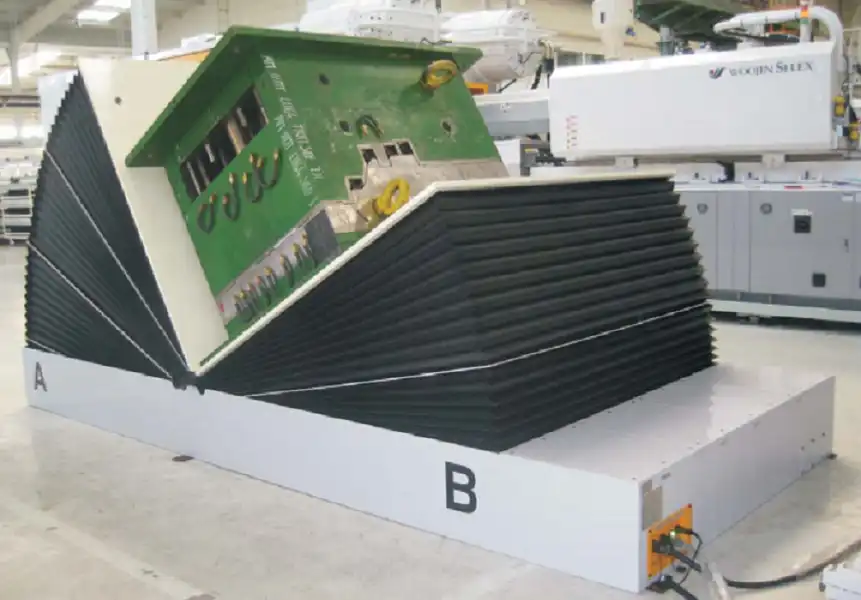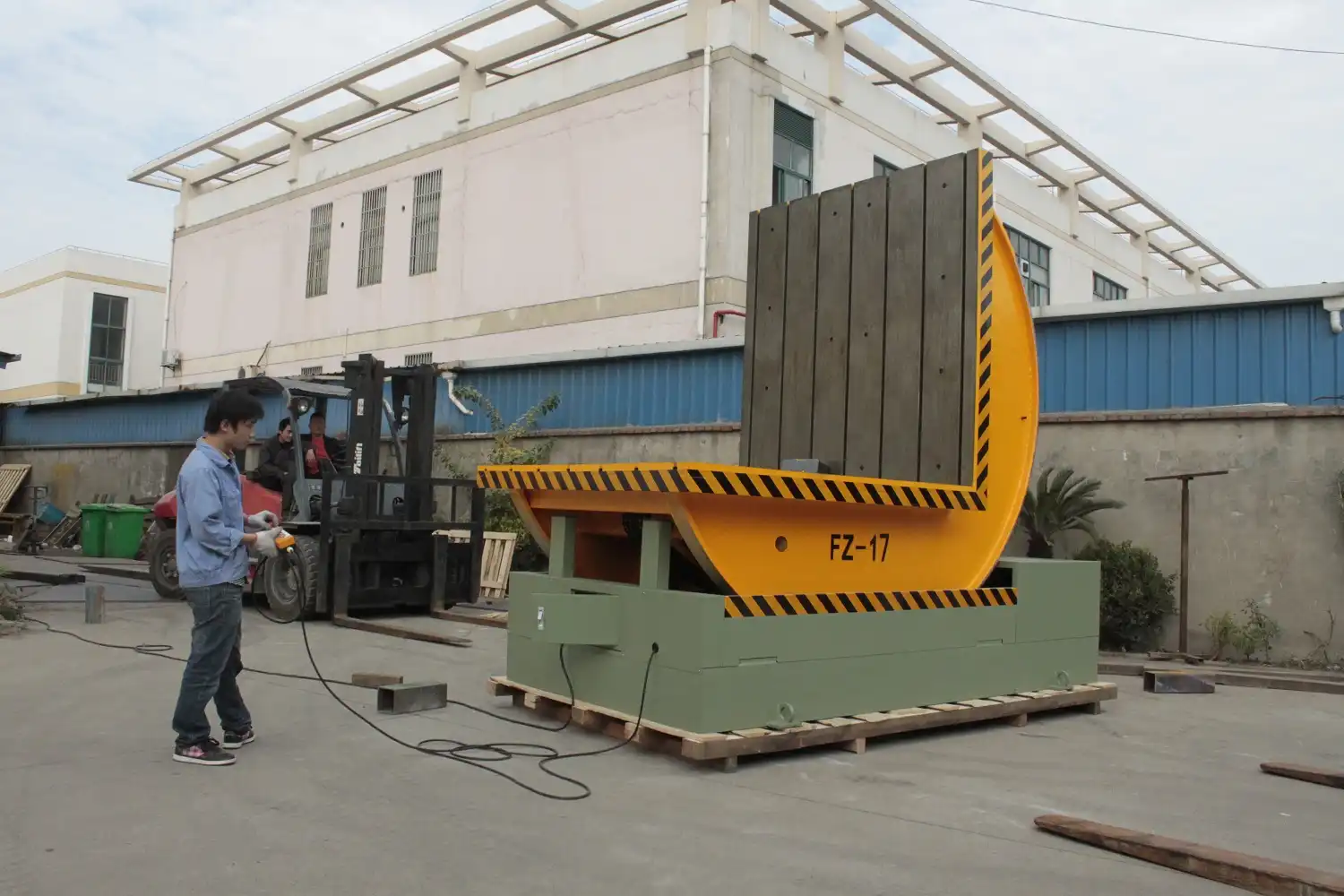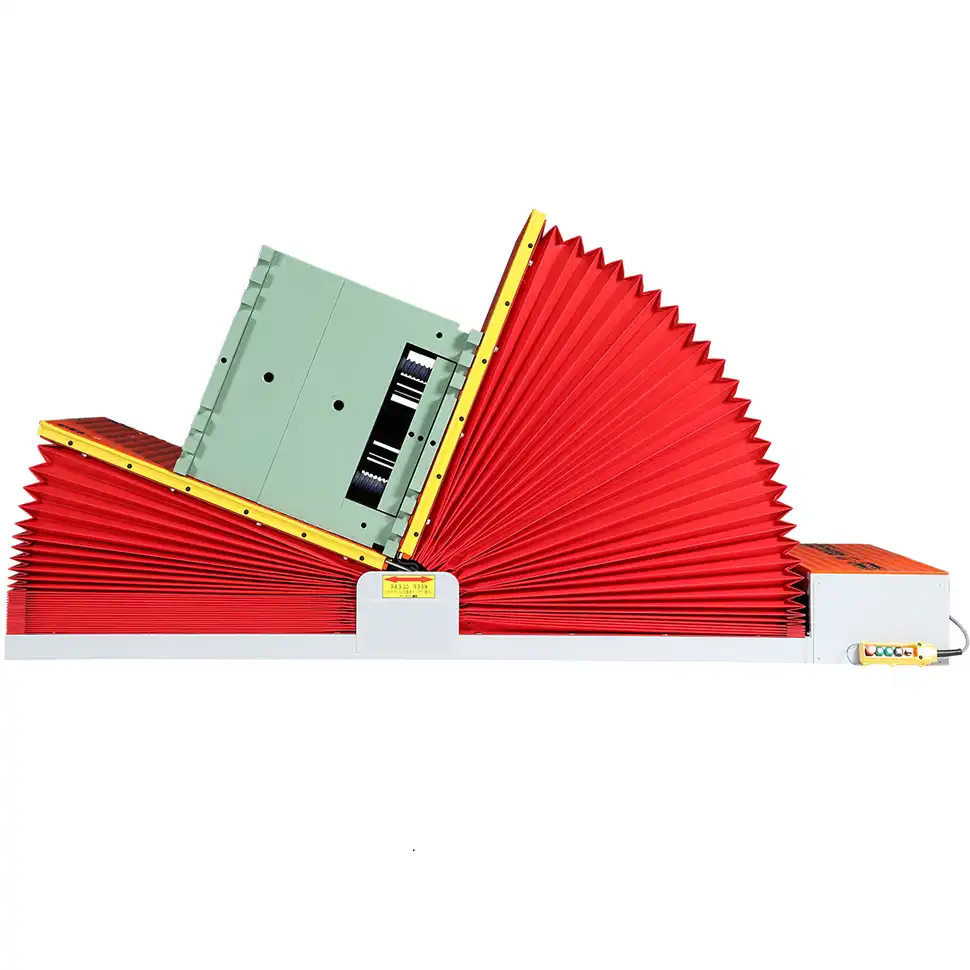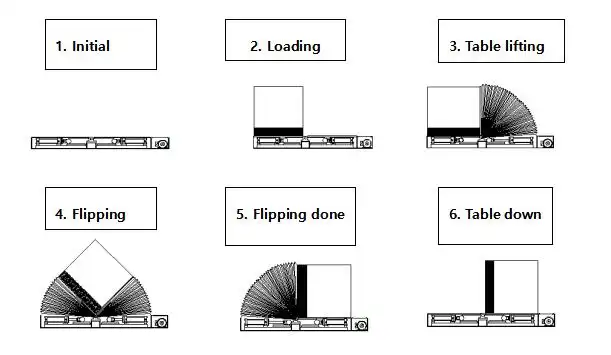Mold Flipper: How to Plan Integration with Conveyors or AGVs in Vietnam?
Are you running a busy manufacturing facility in Vietnam? You probably know the challenges of moving heavy molds. It can be slow, dangerous, and create a serious bottleneck in your production line. You might be considering a mold flipper to improve safety and speed. But the integration with your existing or future transport systems, like conveyors or AGVs, seems like a huge, complex project. Getting it wrong can lead to costly downtime, terrible accidents, or a complete waste of your investment. The choice between a fixed conveyor and a flexible AGV system has long-term effects on your entire operation. A clear, step-by-step plan is the only way forward. I have managed many of these projects, and I want to share my experience to help you make a smart decision that boosts both safety and productivity.
To plan the integration of a mold flipper with conveyors or AGVs in Vietnam, you must start with a detailed analysis of your factory layout and workflow. Then, you must compare the fixed-path efficiency of conveyors against the flexibility and scalability of AGVs based on your specific production needs. A critical part of the plan is developing robust safety protocols and control system handshakes. Finally, you need a comprehensive budget that covers not just the initial purchase and installation but also the long-term operational and maintenance costs in the local Vietnamese context.

This might seem like a lot to handle. But breaking the problem down makes it manageable. Each step, from the initial choice of transport to the final safety checks, is a building block for a more efficient and profitable factory. As an engineer and a factory owner myself, I know that every equipment decision impacts your bottom line and your people. Let’s walk through the key questions you need to ask to build a successful integration plan for your operations in Vietnam.
What are the key factors to consider before choosing between conveyors and AGVs for mold flipper integration?
You have a heavy mold. You have a mold flipper. Now you need to move the mold to and from the flipper. You face a big decision: use a traditional conveyor system or a modern fleet of Automated Guided Vehicles (AGVs)? Choosing the wrong option can lock you into an inefficient process for years. A conveyor might be too rigid if your production needs change. An AGV system might be too complex or expensive if your process is simple and repetitive. The right choice depends entirely on your factory's reality. Let's break down the factors so you can choose the system that truly serves your business goals.
The key factors are your production volume and product mix, your factory layout and available space, your need for future flexibility and scalability, and your budget for both initial investment (CAPEX) and long-term operations (OPEX). Conveyors are ideal for high-volume, low-variety production with a fixed path, while AGVs excel in dynamic environments that require flexibility and can adapt to changing layouts.

I remember a client in the steel industry, much like Javier. His factory had a dedicated line for producing a standard-sized steel coil. The process was identical every single day. For him, a heavy-duty roller conveyor integrated with the mold tilter was the perfect solution. It was reliable, simple, and cost-effective for that high-volume, unchanging task. A few years later, I worked with another client in the automotive parts sector. Their factory in Vietnam produced dozens of different components, each requiring a unique mold. Their production schedule changed weekly. For them, AGVs were the only logical choice. The flexibility to change paths and serve multiple workstations was essential. These two stories show why there is no single "best" answer. You must analyze your own operation.
Deep Dive: Analyzing Your Operational Needs
To make the right choice, you need to look closely at four main areas. Each one can point you toward either conveyors or AGVs.
Layout and Space Constraints
Your factory floor is valuable real estate. Conveyors are permanent structures. They occupy a fixed path and can create barriers for people and forklifts. You must plan their route carefully because changing it later is expensive and disruptive. AGVs, on the other hand, operate on open floor space. They follow magnetic tape, QR codes, or use laser navigation. This leaves the floor open and makes the workspace feel less cluttered.
| Factor | Conveyor System | AGV System |
|---|---|---|
| Footprint | Permanent, fixed path. | Flexible, open floor. |
| Obstruction | Can block traffic routes. | Moves around obstacles. |
| Installation | Requires significant floor work. | Minimal floor preparation. |
Production Volume and Product Variety
This is often the most important factor. How many molds do you move per hour, and how many different types of molds are there? Conveyors are kings of high-volume, low-variety work. If you are moving the same mold back and forth on a dedicated line, a conveyor provides unmatched speed and reliability. But if you have a "job shop" environment with many different molds going to different machines, an AGV system is far superior. You can easily reprogram an AGV to take a mold to a different press or storage location.
Future Flexibility and Scalability
Think about your business in five years. Do you expect to reconfigure your production lines? Will you add new machines? Expanding or changing a conveyor system is a major project. You have to stop production, tear out old sections, and install new ones. With AGVs, scaling up is much easier. You can simply add more vehicles to the fleet. Changing a route might only require updating software or laying down new guidance tape. AGVs give you the power to adapt to market changes without massive reinvestment in infrastructure. This is a key strategic advantage for a forward-thinking owner like Javier.
Investment and Operating Costs
You must look at the Total Cost of Ownership (TCO). Conveyors usually have a lower initial purchase price for a simple, point-to-point system. Their mechanical systems are well-understood. AGVs have a higher upfront cost per vehicle, and you also need to invest in the control software and charging stations. However, the operational costs can be different. Conveyors often run continuously, consuming energy all the time. AGVs only use significant energy when moving and can be programmed for smart charging during off-peak hours. Maintenance for conveyors involves replacing rollers, belts, and motors. AGV maintenance involves batteries, sensors, and software updates. You need to model both scenarios to see which one makes more financial sense for your operation over a 10-year period.
How do you ensure safety and operational efficiency during the integration process in a Vietnamese factory?
You have decided on a conveyor or an AGV system. Now comes the critical part: integrating it with your mold flipper safely and efficiently. A mistake here is not just an inconvenience; it's a serious risk to your people and your production schedule. In a busy Vietnamese factory, where a mix of new and old equipment often coexists, introducing a new automated system can create unexpected hazards. A single failure in the communication between the flipper and the transport system could cause a multi-ton mold to drop. You must build your integration plan on a foundation of safety. It is not a feature; it is a requirement.
To ensure safety and efficiency in a Vietnamese factory, you must implement a multi-layered approach. This includes physical safety measures like fencing and light curtains, robust digital "handshake" protocols between the machines' PLCs, and comprehensive operator training conducted in the local language. You also must ensure full compliance with Vietnam's specific labor safety regulations and standards.

I always tell my clients that safety systems are not a place to save money. I once visited a factory where the integration was done poorly. They relied on an operator to visually confirm the AGV was in position before starting the mold flipper. One day, the operator was distracted. He pressed the button. The AGV had not arrived yet. The mold tilted and fell, damaging the flipper and shutting down the line for three days. The cost of that downtime was ten times the cost of a proper sensor and PLC interlock system. This is why we must engineer the human element out of critical safety checks wherever possible. Machines should talk to each other to confirm it is safe to proceed.
Deep Dive: A Framework for Safe Integration
A safe system is an efficient system. Accidents cause downtime, which is the enemy of efficiency. Let's break down the essential components for a secure and smooth integration.
Physical Safety Measures
This is your first line of defense. You need to create a secure zone around the mold flipper and its interface point with the conveyor or AGV.
- Physical Guarding: Install robust safety fencing around the entire work cell. This prevents people from accidentally walking into the path of a moving mold or the flipper itself.
- Access Gates: Any gates in the fence must have interlock switches. If a gate is opened, the entire system must automatically stop in a safe state.
- Light Curtains and Area Scanners: At the points where the conveyor or AGV enters and exits the cell, use light curtains. If a person or object breaks the light beam while the system is in motion, it triggers an immediate emergency stop. For AGVs, laser area scanners can create a dynamic safety field that moves with the vehicle.
- Emergency Stops (E-Stops): Place clearly marked E-stop buttons at multiple locations around the cell. Anyone should be able to stop the entire operation instantly if they see a problem.
Digital Safety and Control System Integration
This is the brain of the operation. The mold flipper and the transport system must communicate perfectly. This is achieved through their Programmable Logic Controllers (PLCs).
- The Digital Handshake: This is a sequence of signals the machines exchange. For example:
- The conveyor/AGV sends a signal: "I am in the correct position and locked."
- The mold flipper PLC receives this signal and verifies it.
- The flipper sends a signal back: "I acknowledge you are in position. I am starting my sequence."
- Only then does the flipper begin to move.
This handshake prevents any action from happening until all conditions are confirmed to be safe.
- Fault Monitoring: The PLCs should constantly monitor the status of all sensors, motors, and safety devices. If a sensor fails or a motor overheats, the system should stop and send an alert to the operator, indicating the exact problem.
Operator Training and Local Compliance in Vietnam
Technology is only half the solution. Your people are the other half.
- Local Language Training: All training for operators and maintenance staff must be conducted in Vietnamese. Manuals, safety warnings, and interface screens should also be in Vietnamese. Workers need to understand not just how to operate the equipment, but why the safety procedures are in place.
- Compliance with Vietnamese Law: You must ensure your entire system complies with Vietnam's National Technical Regulations on Occupational Safety. This includes standards for machine guarding, electrical safety, and workplace ergonomics. Working with a local partner or a supplier like us, who understands these specific regulations, is crucial. It protects you from fines and legal issues.
| Safety Layer | Key Actions | Primary Goal |
|---|---|---|
| Physical | Fencing, light curtains, E-stops | Prevent unauthorized access and physical contact. |
| Digital | PLC handshakes, fault monitoring | Ensure machines operate in a safe, synchronized sequence. |
| Human | Vietnamese language training, clear procedures | Empower operators to work safely and correctly. |
| Regulatory | Adherence to local standards | Ensure legal compliance and a safe workplace. |
What are the long-term cost implications of integrating a mold flipper with an automated system?
As a business owner, you know the purchase price is just the beginning of the story. A machine that looks cheap upfront can become very expensive over its lifetime through high energy use, frequent maintenance, and costly downtime. When you plan a major project like integrating a mold flipper, you must look at the total cost of ownership (TCO). This is especially true for a capital-intensive business like a steel mill. Every dollar must be justified by a return on investment. Thinking about the long-term costs helps you avoid surprises and ensures your investment is profitable for years to come.
The long-term cost implications go far beyond the initial purchase price. You must calculate the ongoing operational expenditures (OPEX), which include energy consumption, routine maintenance parts, and specialized labor. You also need to factor in the potential "hidden" costs of software licenses, training, and, most importantly, the financial impact of production downtime if the integrated system fails.

Early in my career as a factory owner, I learned this lesson the hard way. I bought a piece of equipment based on the lowest bid. It worked well for about a year. Then, the problems started. The spare parts were expensive and had to be imported with long lead times. The local technicians did not know how to service it. The energy it consumed was 20% higher than the competitor's model. Over five years, that "cheap" machine cost me more than the premium option would have. Now, I tell every client, especially strategic thinkers like Javier, to analyze the 10-year cost, not the 10-minute price tag. This mindset separates successful, sustainable companies from those that struggle.
Deep Dive: Calculating the Total Cost of Ownership (TCO)
TCO gives you a complete picture of the financial impact of your investment. It is generally broken down into two main categories: CAPEX and OPEX.
Capital Expenditure (CAPEX)
This is the money you spend upfront to get the system running. It's more than just the cost of the machines.
- Equipment Cost: The price of the mold flipper, conveyors, or AGVs.
- Installation & Commissioning: The cost of labor to install the equipment, run electrical and data cables, and program the PLCs. This can be significant, especially in a complex integration.
- Software & Integration: The cost of AGV fleet management software or any custom programming needed to make the different machines communicate.
- Initial Training: The cost of training your operators and maintenance team to use and care for the new system.
Operational Expenditure (OPEX)
This is the money you spend every year to keep the system running. This is where the long-term costs hide.
- Energy Consumption: This is a major differentiator. A conveyor system often runs continuously during a shift, consuming a steady amount of electricity. AGVs use power to move and charge their batteries. An AGV system with smart charging can be scheduled to charge during cheaper, off-peak electricity hours, a key advantage for cost-conscious owners.
- Routine Maintenance: All mechanical systems need maintenance. For conveyors, this means replacing bearings, rollers, belts, and motors. For AGVs, it involves battery replacement every few years, tire wear, and sensor cleaning/calibration. You must budget for both parts and the labor hours required.
- Spare Parts Inventory: You will need to keep some critical spare parts on-site to minimize downtime. This is capital tied up in inventory.
- Software Licenses/Support: Some AGV management systems require an annual license fee or a support contract. This must be included in your OPEX calculation.
| Cost Factor | Conveyor System | AGV System |
|---|---|---|
| Energy Use | Constant, predictable draw. | Intermittent, can use smart charging. |
| Maintenance | Mechanical parts (rollers, belts). | Batteries, sensors, software. |
| Flexibility Cost | High cost to change layout. | Low cost to change layout. |
| Software Fees | Usually none. | Potential annual fees. |
The Cost of Downtime
This is the biggest and most unpredictable cost. If the integrated system fails, your entire production line might stop. The cost of downtime is the value of the products you could not make during that period. A well-designed system with reliable components and a good preventive maintenance plan is your best insurance against this cost. Choosing a supplier who provides excellent local support in Vietnam is also critical. When something breaks, you need a partner who can respond quickly, not one who is an ocean away. This is a core part of my philosophy at SHJLPACK. We are not just selling a machine; we are providing a solution that keeps your factory running.
How can a successful integration project support wider goals like digitalization and cost reduction?
Buying a new piece of equipment like a mold flipper is a tactical decision. But for a strategic leader like Javier, every tactical decision must support the larger, long-term vision for the company. You are not just solving the problem of turning a mold. You are looking for ways to hit your big goals: improving uptime to 95%, cutting energy use by 10%, and reducing overall operating costs. A modern, well-integrated automation project is a perfect opportunity to do this. It should not be an isolated island of technology. It should be a source of data and efficiency that benefits the entire factory.
A successful mold flipper integration acts as a catalyst for your wider goals by providing valuable data for your digital systems (MES/ERP), enabling predictive maintenance to increase uptime, and directly reducing labor and energy costs. It transforms a simple mechanical task into an intelligent node within your smart factory ecosystem, helping you achieve measurable improvements in your key performance indicators.

I see this all the time. A client starts with a simple goal: "I need to flip this thing safely." We deliver the solution. But the clients who get the most value are the ones who ask the next question: "What can this new system tell me?" The sensors on the flipper, the data from the AGV fleet manager—this is gold. It can tell you about cycle times, mold usage, and potential bottlenecks. By connecting this project to your factory's digital brain, you turn a piece of steel into a source of intelligence. This is the foundation of Industry 4.0, and it's how you move from just running a factory to optimizing it.
Deep Dive: From Machine to Strategic Asset
Let's explore how this single project can create a ripple effect of benefits across your entire operation, directly addressing the goals of a forward-thinking CEO.
Data Generation for Digital Transformation
Your goal is to achieve comprehensive production visualization. This integration project is a new source of high-quality data.
- MES/ERP Integration: The PLC controlling the mold flipper and transport system can be connected to your Manufacturing Execution System (MES). It can automatically report:
- Which mold was used.
- The start and end time of the flipping cycle.
- The total number of cycles for a specific mold (useful for maintenance scheduling).
- Any error codes or stoppages.
This automated data entry is more accurate than manual tracking and provides real-time visibility into what is happening on the shop floor. This data helps you achieve the "smart排产" (intelligent scheduling) Javier wants.
Enabling Predictive Maintenance for 95% Uptime
Aging equipment is a huge challenge. Predictive maintenance, powered by data, is the solution.
- Sensor Data: Modern mold flippers and AGVs are equipped with sensors that monitor motor current, vibration, temperature, and hydraulic pressure.
- Data Analysis: This stream of data can be fed into an analytics platform. The platform can learn the normal operating signature of the equipment. When it detects a deviation—for example, a motor's vibration slowly increasing over several weeks—it can raise an alert. This allows your maintenance team to schedule a repair before a catastrophic failure occurs. This proactive approach is the only way to move from reactive fixing to planned maintenance, which is essential for hitting a 95% uptime target.
Driving Down Operational Costs
This is where the investment pays for itself.
- Labor Cost Reduction: Automating the transport and flipping of heavy molds eliminates a dangerous and labor-intensive manual task. This reduces the risk of injuries and allows you to reassign those workers to more value-added roles.
- Energy Cost Reduction: As discussed, a smart AGV system can be more energy-efficient than an always-on conveyor. By analyzing the data from your new system, you can find other opportunities. For instance, you might discover that a particular machine is idle for long periods. This data allows you to optimize its power-down schedule, contributing to your goal of a 10% reduction in unit energy consumption.
| Strategic Goal | How the Integration Project Helps |
|---|---|
| Increase Uptime to 95% | Enables predictive maintenance through sensor data. |
| Reduce Unit Energy Cost by 10% | Allows for energy-efficient choices (AGV vs. Conveyor) and provides data for optimization. |
| Advance Digitalization | Feeds real-time, accurate data into MES/ERP systems. |
| Reduce Overall Costs by 8% | Lowers labor costs, reduces downtime, and cuts energy use. |
My Insights
I started my journey as an engineer on the factory floor. I spent years fixing machines, seeing what worked and what didn't. Later, when I built my own factory, I had to sign the checks for those machines. I have been on both sides. This experience has taught me one thing: the most important decision is not about the machine itself, but about the partner you choose to work with.
For a leader like Javier, who thinks about long-term strategy and ROI, a supplier is not enough. You need a partner. A supplier sells you a box. A partner helps you solve a problem. They listen to your goals—reducing energy costs, hitting 95% uptime, digital transformation—and they help you design a solution that addresses those goals. They understand that the project doesn't end when the machine is installed. It ends when you are seeing the business results you wanted.
When you're operating in a specific country like Vietnam, this becomes even more critical. You need a partner who understands the local landscape. Someone who knows how to navigate the logistics, who can provide training in the local language, and who has a support team on the ground that can be there when you need them. The best technology in the world is useless if you can't get the support to keep it running. As one factory owner to another, my advice is to look beyond the technical specifications. Find a partner who is as invested in your success as you are. That is the real total solution.
Conclusion
Properly planning your mold flipper integration with conveyors or AGVs is key to boosting safety, efficiency, and future growth in your Vietnamese facility.



